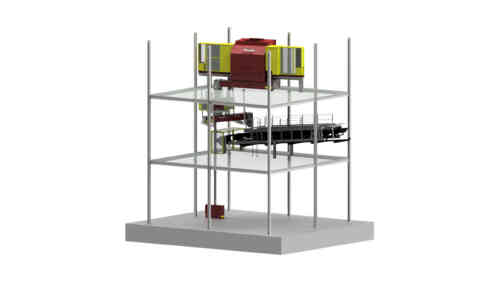Introduction
Many operations have sampling equipment and a sampling plan in place. They operate the equipment according to plan to collect and analyze sample material.
But how do we know that the equipment, plan and sample collected are correctly meeting our needs or the needs of our customers?
A good place to start is to implement some best practices that can help improve the efficiency of your sampling process in general, along with the samples and data collected specifically.
Fortunately, assuming that you are working with correctly designed equipment, many of these best practices can be applied without significant added cost — and many are likely to be modifications to existing practices.
1. Knowledge is key
From the time the sample is physically collected until the point where the data is developed, quite a few people can be involved. This can be everyone from the mechanics who maintain the equipment, to the operators who run the equipment, to the lab technicians who process the sample.
If you consider that many facilities operate more than one shift, the total number of people who may somehow touch the sampling process can be quite large.
Given this, it is very important that all personnel involved in the sampling process have at least a basic understanding of the following:
- Sampling concepts
- The importance of correct sampling
- An overview of the complete sampling process at their facility.
Training personnel on why their particular function is important in the larger scheme, and what the overall plan is trying to accomplish, can encourage them to be more aware of their daily tasks and more engaged in making their portion of the process better. This will thereby improve the larger sampling process.
2. Practice good fundamentals
It is much more likely that the overall sampling process will perform well and provide good data if the basics are correct.
These basics are the keys to sampling correctness and the building blocks on which successful sampling plans are built. These are items like verifying that cutters are the correct size and correctly delimit sample increments, and checking to see that the sample increment collected is in agreement with the calculated increment mass.
Other items may be to verify that sample flow through various parts of the sampling system is what is expected based on the system design, and that the number of total increments are being met and that sampler timer settings are correct.
The point is to ensure that all important development criteria (from standards, Tos, etc.) are being met, and that the sampling system properly implements the requirements developed from this criteria.
Once these items are correct, they can be monitored with a regular inspection and maintenance plan.
3. Inspect and maintain
Operating sampling equipment and material in the final sample container does not necessarily mean that the sampling equipment and process is working correctly.
Unfortunately, once a sampling system is installed and commissioned, it can become somewhat lost in the background with respect to the overall operation of the facility in question.
This can mean that the sampling equipment will receive minimal attention unless:
- A machine is somehow obviously not working correctly
- An alarm condition is set
- No sample material is present in the collection container at the end of a lot
You may have heard the expression about the devil being in the details. In sampling activities, this is true more times than not.
The details are what we typically need to get right to have a successful quality or process control program. This concept is why it is very important to implement a periodic inspection and maintenance/adjustment plan for sampling systems and equipment.
Depending on your application and type of equipment, this inspection and maintenance plan can take on a variety of forms. Your sampling equipment manufacturer can help you identify common areas for inspection and maintenance, as well as offer some guidance as a starting point for scheduling purposes.
4. Track your results
Samples collected can provide a good deal of information that can be used for making quality control or process control decisions. They can also be used to monitor the performance of the sampling system and overall plan.
Feedback from data collected can be used to estimate various sampling related errors. Information on these errors can be used to identify potential problem areas in sample collection or processing, and adjustments can be made based on these findings.
Data from the sampling system should also be monitored on a continuous basis. Using control charts or variograms to monitor items like sample ratio or content of a material of interest can also provide information regarding:
- The health of the sampling system
- The effectiveness of a sampling plan
It can also reveal more hidden details such as cycles in the process that could have an effect on sampling results
Tracking results will give you a clear picture of the current status of your sampling system and sampling process. It will also help you evaluate what potential changes may need to be made.
5. Strive to improve
Repeatedly working to educate personnel, making sure key principles of correct sampling are respected, inspecting your systems and equipment, making any necessary repairs or adjustments, and then reviewing what has been done and the results you have achieved will get you into a positive continuous cycle.
In doing this, any large problems that may exist will most certainly be identified and addressed. The more times this cycle is completed, the smaller any potential issues may be.
Ultimately, any remaining potential issues will fall within acceptable levels of precision, and your process, product and sampling plan will be fully optimized.
Having correctly designed sampling equipment and systems is important. A properly developed and implemented plan is equally important.
Ensuring that all these items are functioning at optimum levels can require some time and effort, but fortunately, these items can be addressed with a few best practices.












